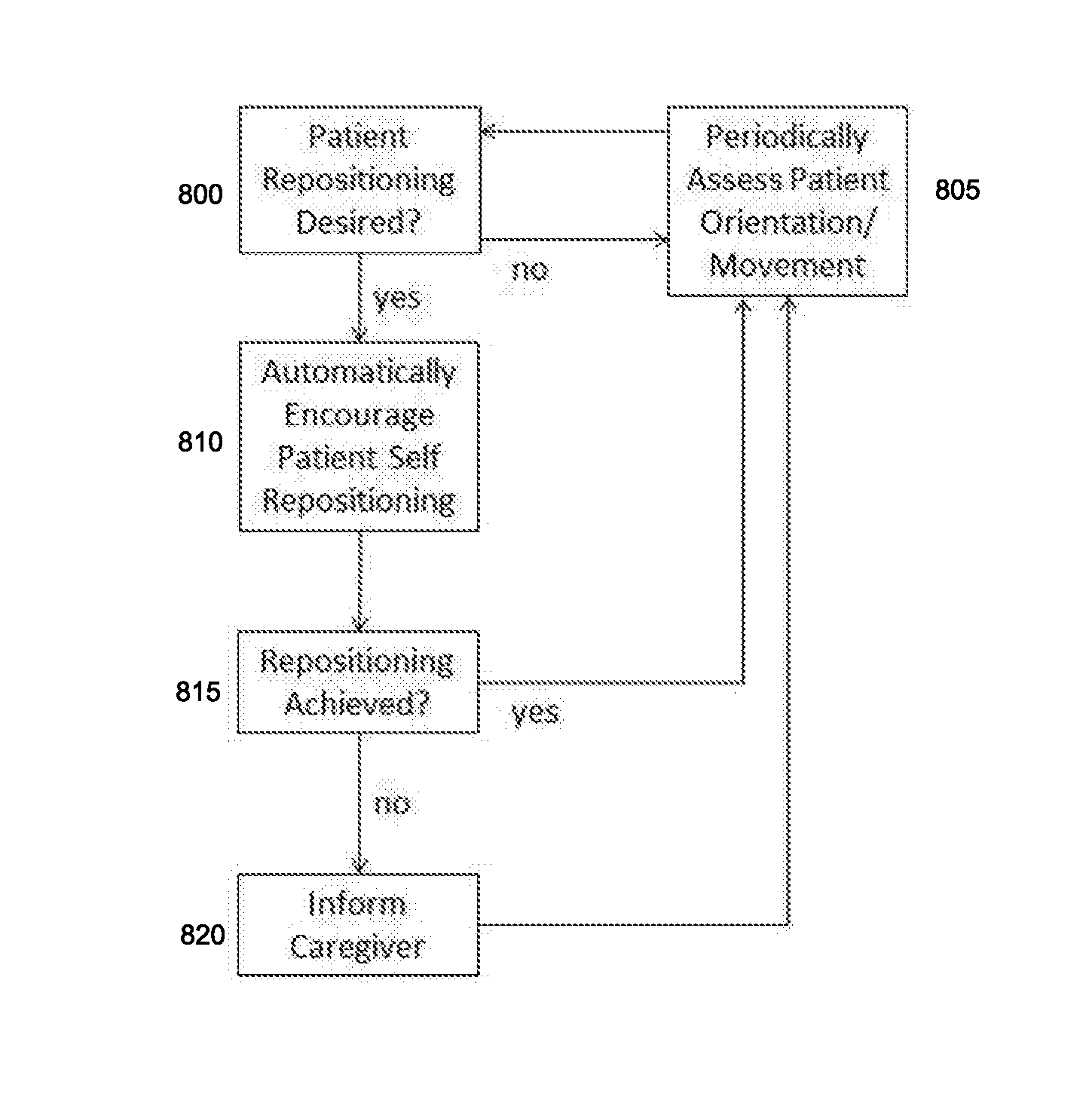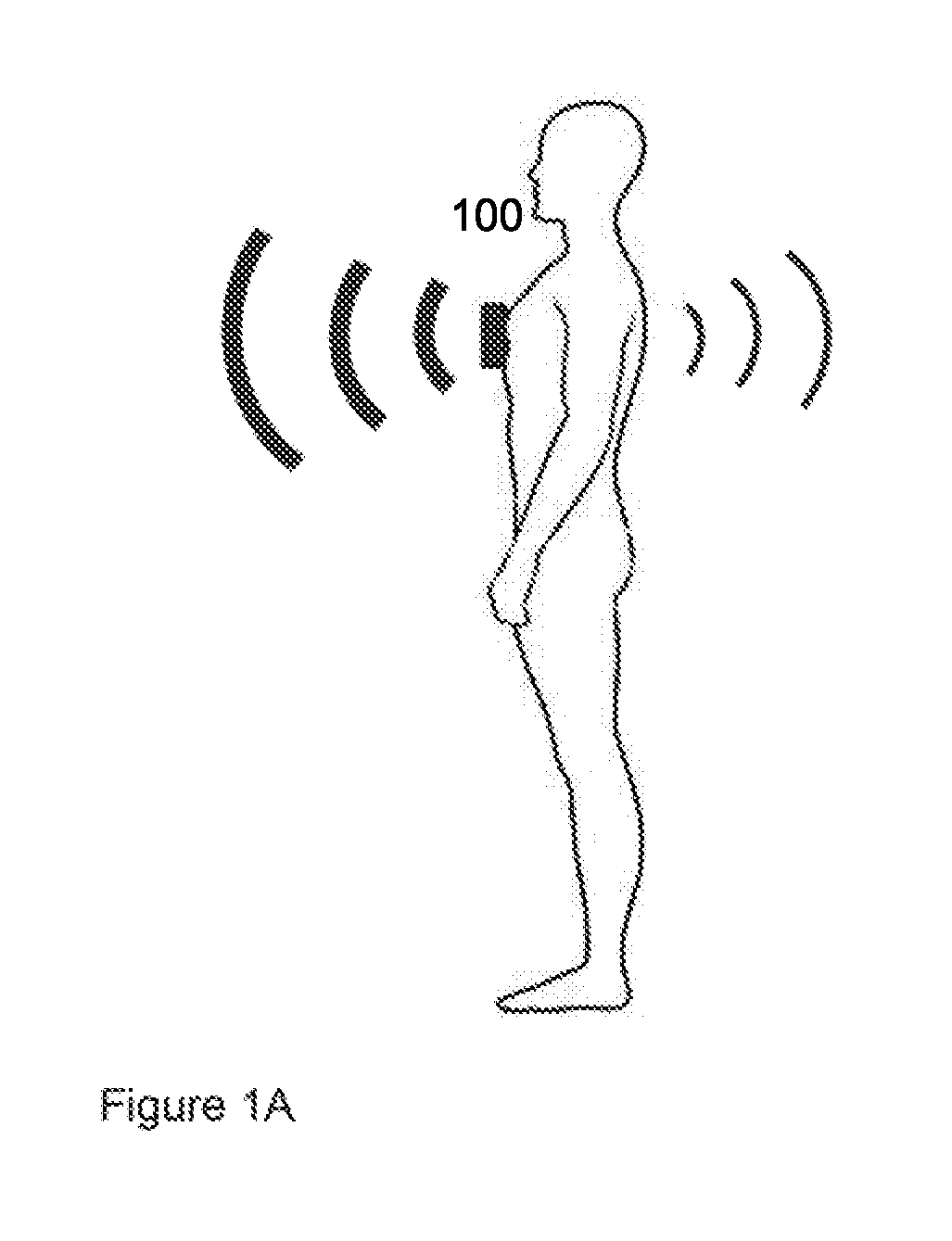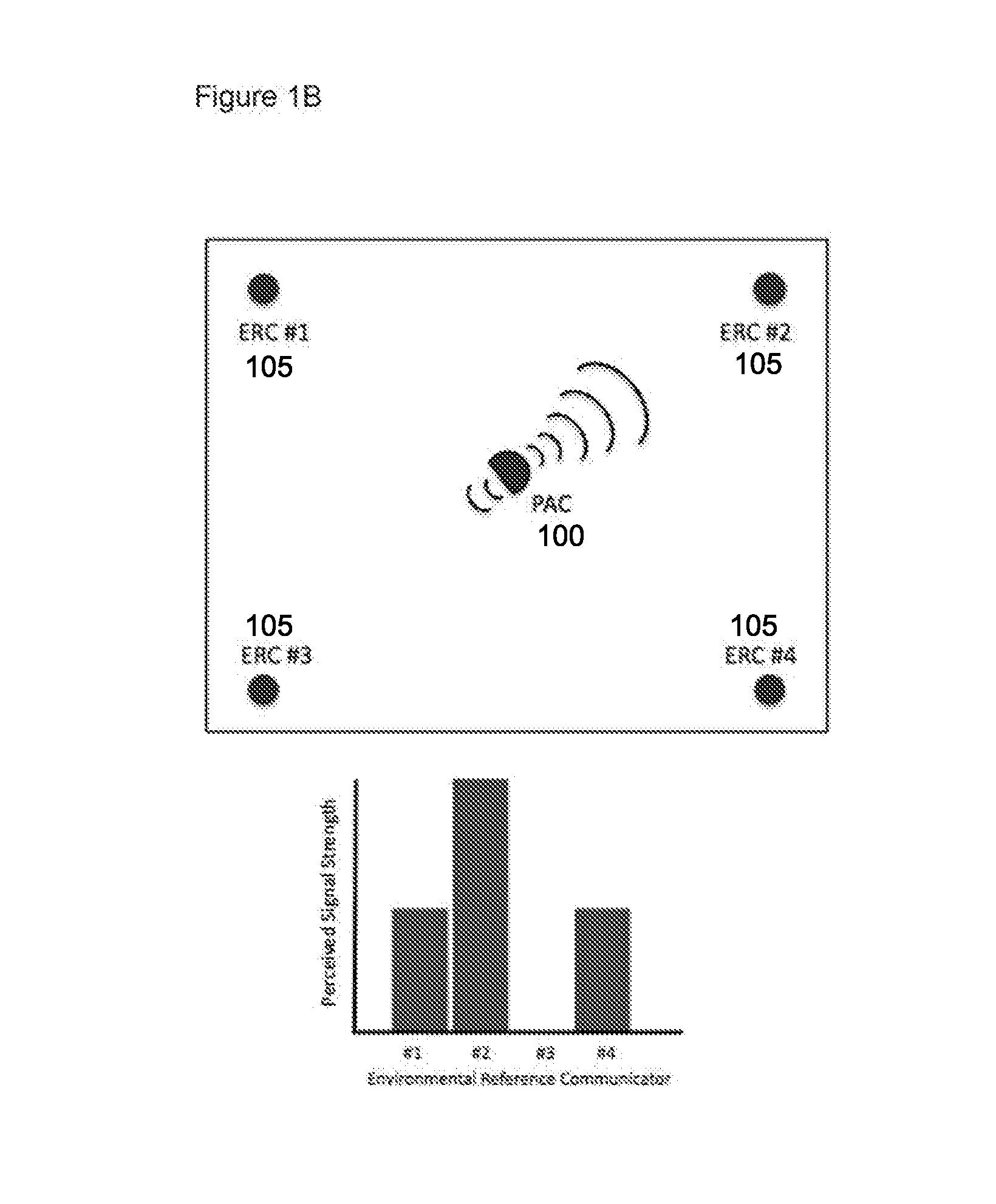Pressure Ulcer Detection Methods, Devices and Techniques
a technology for pressure ulcers and detection methods, applied in the field of pressure ulcer detection methods, devices and techniques, can solve the problems of affecting the treatment of pressure ulcers and other health conditions, affecting the treatment effect, so as to achieve the effect of convenient orientation
- Summary
- Abstract
- Description
- Claims
- Application Information
AI Technical Summary
Benefits of technology
Problems solved by technology
Method used
Image
Examples
Embodiment Construction
Location Sensing
Orientation-Based Location Analysis
[0026]In an aspect of the present invention a more accurate means for determining the location of patients with respect to a care environment is provided. A wireless communicator is associated with a patient, referred to herein as a patient-associated communicator (PAC). The PAC comprises an antenna that is capable of sending or receiving wireless signals. The PAC also has a means for determining its orientation (including the orientation of the PAC's antenna) relative to a patient and / or the environment. Such means for determining the PAC's orientation include an accelerometer, gyroscope, or magnetometer. In some implementations, the PAC has a directional antenna. The PAC can be physically attached to a patient, or can be in close proximity to a patient, or can be in a known location / position / orientation relative to a patient. The PAC can communicate with other PACs and can also communicate with external wireless communicators that...
PUM
 Login to View More
Login to View More Abstract
Description
Claims
Application Information
 Login to View More
Login to View More - R&D
- Intellectual Property
- Life Sciences
- Materials
- Tech Scout
- Unparalleled Data Quality
- Higher Quality Content
- 60% Fewer Hallucinations
Browse by: Latest US Patents, China's latest patents, Technical Efficacy Thesaurus, Application Domain, Technology Topic, Popular Technical Reports.
© 2025 PatSnap. All rights reserved.Legal|Privacy policy|Modern Slavery Act Transparency Statement|Sitemap|About US| Contact US: help@patsnap.com



